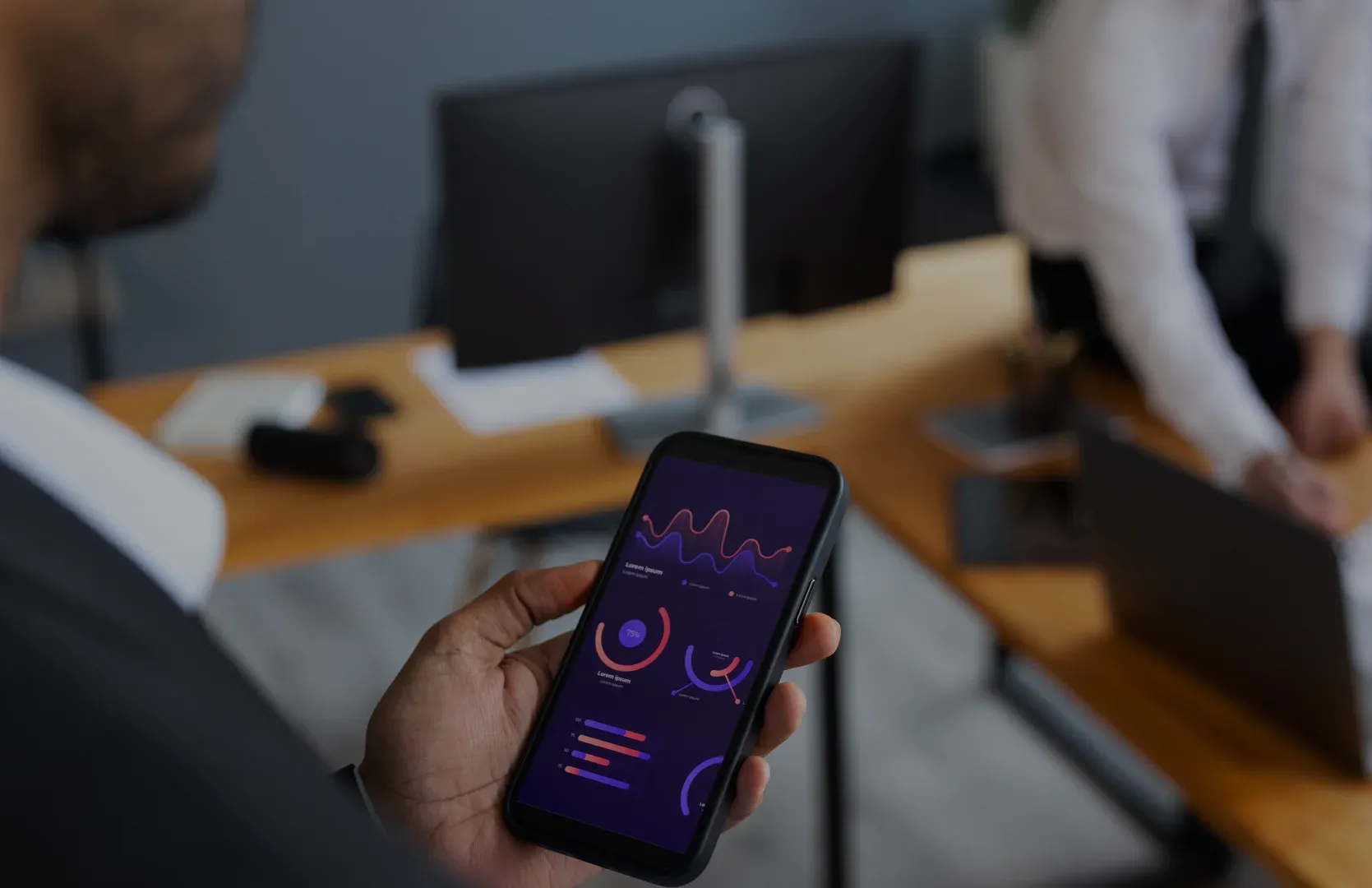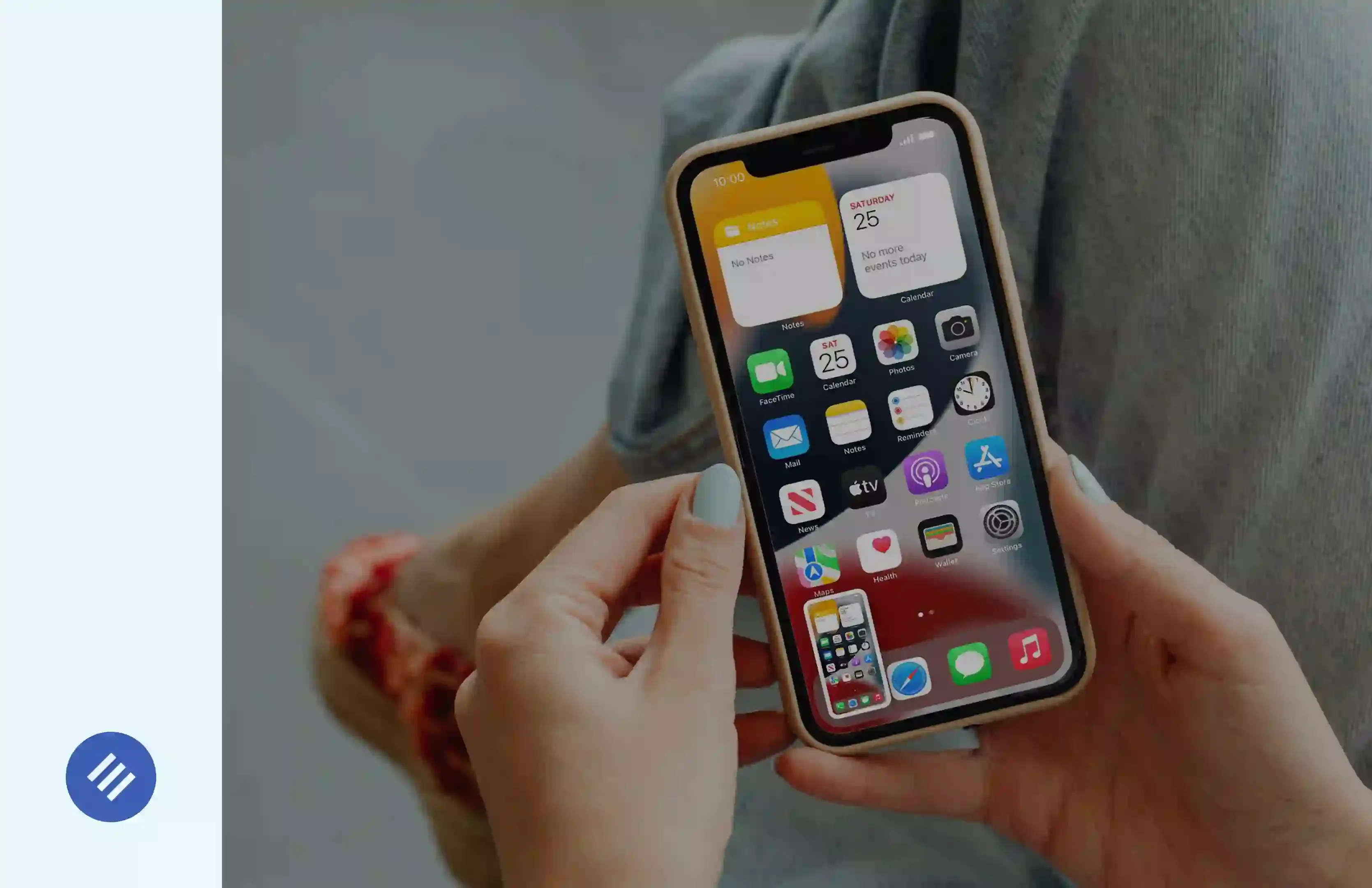.webp)
A mobile app should inspire trust and forge a genuine connection with its audience.
While technology allows us to automate and streamline interactions, it shouldn’t erase the human touch. In fact, a digital experience that feels too impersonal can actually hinder user engagement. According to a study by HubSpot, 16% of consumers have abandoned a purchase due to the lack of human assistance at a critical point in their journey.
To build a meaningful connection with users, we need to go beyond standardized messages and generic interactions. A mobile app should inspire trust and forge a genuine connection with its audience. After all, who hasn’t exited a chatbot in frustration when trying to reach a real person?
At Thirdbridge, this belief drives how we design mobile applications: beyond performance, we aim to craft experiences that feel human — and that people truly enjoy.
Humanizing Mobile Apps: Designing for Intuition and Empathy
Humanizing a mobile app means designing interfaces and features that mimic the nuances of human interaction. The goal is to build an experience that’s more intuitive, empathetic, and fluid — one that respects users’ needs, emotions, and behaviors.
This shows up in dozens of small but powerful details: a friendly tone of voice, subtle animations that bring the interface to life, or micro-interactions that reassure the user that everything is working as it should. Even a simple error message, if well crafted, can turn frustration into a moment of delight. By combining artificial intelligence with human-centered design, the app becomes more than a tool — it becomes a comforting, engaging presence in the user’s day-to-day life.
The Foundations of Humanized App Design
Humanizing an app goes far beyond warm wording and charming animations. It rests on solid foundations that transform a functional interface into an emotionally engaging experience. Two key pillars support this transformation: artificial intelligence and human-centered design.
1. Artificial Intelligence (AI)
AI is more than just an automation engine — it’s a catalyst for personalized, meaningful interactions. In a mobile app, AI enables you to:
- Understand individual preferences through behavioral analysis.
- Anticipate needs with smart recommendations, like those used by Spotify or Netflix.
- Make interactions feel seamless through voice assistants or chatbots that engage in natural dialogue using Natural Language Processing (NLP) and Natural Language Understanding (NLU).
For instance, an AI-powered chatbot can grasp the intent behind “Where’s my order?” — even if the user types “Where’s my box?” or “Still haven’t received my package…”. This level of understanding brings machines closer to the nuances of human language.
But most importantly, AI allows for humanized experiences at scale. Every user receives a context-aware, personalized journey — without adding manual effort to customer support teams.
2. Human-Centered Design
If AI is the engine behind personalization, human-centered design is the driver of empathy. It’s grounded in a deep understanding of the user’s emotions, expectations, and reactions. This approach aims to:
- Eliminate friction through intuitive navigation, clear visual feedback, and user-friendly error messages.
- Strengthen emotional connection with a warm tone, calming colors, and gentle animations.
This kind of design doesn’t happen by accident. It often stems from a rigorous process: user testing, emotional mapping, and realistic usage scenarios. A well-crafted interface isn’t just beautiful — it’s psychologically comfortable.
By combining AI's power with the sensitivity of thoughtful design, you create an app that speaks the user’s language, responds with empathy, and adapts to their pace. These are the details that turn an app from useful… to unforgettable.
At Thirdbridge, we believe this is how truly human-centric mobile experiences are built — ones where users feel seen, guided, and valued from the very first screen.
Conditions for Humanizing a Mobile Experience
To create a true connection with users, a mobile app must meet several essential conditions:
Create an authentic and lasting relationship
A well-designed digital experience should feel like it was built by humans, for humans. Every interaction and design choice should reflect a clear intention: to understand the user, anticipate their needs, and support their goals. This care translates into smooth navigation, relevant personalization, and an interface that fosters trust from the very first interaction. That sense of human presence behind the screen is what drives adoption and long-term loyalty.
Transparency also plays a major role in building that trust — especially when it comes to how apps handle personal data. A recent GoodFirms study found that over 60% of users feel uneasy when apps request permissions without explaining why. In contrast, apps that clearly communicate the purpose behind these requests are more likely to earn users’ trust and cooperation.
Humanizing a digital experience means making users feel respected, informed, and in control. Being upfront about data access and permissions isn’t just a legal checkbox — it’s a relational gesture that reinforces credibility.
Use a natural, conversational tone
Language plays a central role in UX. It’s not just about delivering information — it’s about building a relationship. A cold or generic tone creates emotional distance, while conversational, human language builds proximity, trust, and engagement. Like design, copywriting should guide, reassure, and reflect a relational intent — because apps, too, are in constant dialogue with their users.
Use AI to enhance, not replace, interaction
Artificial intelligence enables apps to understand and interact with users in more human ways. NLP-based voice assistants and chatbots reduce friction and improve the experience by providing timely, contextual responses — turning each exchange into a smoother, smarter moment.
Companies like Duolingo, Spotify, and Headspace have built much of their success on their ability to create emotionally resonant experiences with their users. That’s no coincidence — they’ve understood that emotion is a far stronger driver of engagement than logic.
And that’s also the philosophy behind how we work at Thirdbridge: designing every feature as an opportunity to build trust, and every interface as a stage for authentic interaction.
When these elements come together, mobile apps can finally bridge the gap between technology and humanity — delivering immersive, rewarding, and memorable experiences. Humanizing the mobile journey is essential to fostering trust, loyalty, and lasting value for both users and businesses.
Other articles

.webp)
.webp)
.webp)
Mar 31, 2025
Ratings & Reviews: Their Impact on an App's Success
An app’s success isn’t solely based on meticulous engineering or eye-catching designs. It’s crucial to deliver a product that is high-performing, accessible, useful, and user-friendly, alongside a go-to-market (GTM) strategy tailored to the digital product ecosystem.
.webp)








.png)


.webp)
.webp)



.webp)
.webp)

Oct 29, 2024
AI driving innovation: A new Era for Mobile Apps and User Experience
Artificial intelligence (AI) represents a digital transformation that impacts us all. This rapidly advancing technology, fueled by data analysis, not only enables informed decision-making and reliable forecasting but also allows for the completion of many tasks at a faster pace.

Oct 15, 2024
Enhancing Product Management: Key to Success in Software Development
The distinction between product management and project management is essential for ensuring optimal productivity. It’s not enough to treat them as interchangeable concepts; it’s crucial to adopt a proactive approach to place the right resources in the right places.

Sep 24, 2024
Cybersecurity and Mobile Applications: Choosing the Right Authentication Method
Mobile applications are essential tools that handle personal data, access sensitive information, and are part of our daily lives. However, in an age where the term cybersecurity is on everyone's lips, ensuring the security of these applications and the information they contain is crucial.
.webp)



May 22, 2024
Optimizing Synergy with Your Software Development Partner
The digital realm, especially that of custom digital solution development, is constantly evolving—between fast technological advancements and changing consumer needs, it's quite challenging to predict what the future holds for web players.
.png)


.webp)



.webp)



Oct 15, 2024
Pierre-Étienne Bousquet guest of "Les Affaires"
Our president and co-founder, Pierre-Étienne Bousquet, discussed with Jean-François Venne from Les Affaires the significant growth of digital technology in the retail industry and its impact on online sales, which are becoming increasingly crucial for revenue.


.png)
Jun 14, 2024
Recruiting an In-House Team or Hiring an Agency for Developing Your Application?
When embarking on a project as significant and important as developing an application, a crucial dilemma quickly arises: choosing between a specialized agency or recruiting your own in-house team to accomplish the work. One thing is certain, both options present distinct advantages and constraints.


.png)
May 3, 2024
Simplified Infrastructures for Enhanced Agility
At Thirdbridge, we believe that project-oriented teams deliver superior quality results, and do so more quickly. Given that they are responsible for the entire value creation flow, these teams can increase their velocity by eliminating bottlenecks themselves. Moreover, entrusting end-to-end flow responsibility to our developer teams makes their work even more engaging and motivating.


.webp)






.jpg)